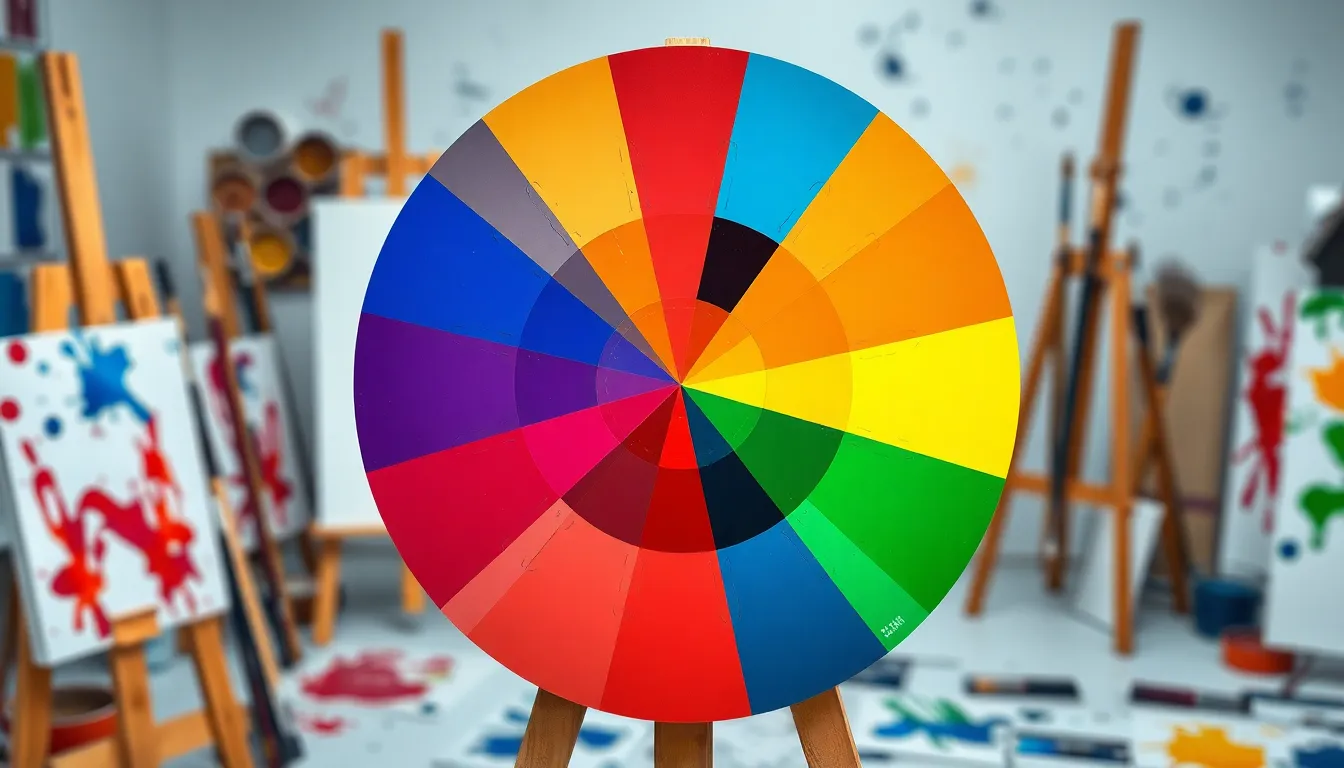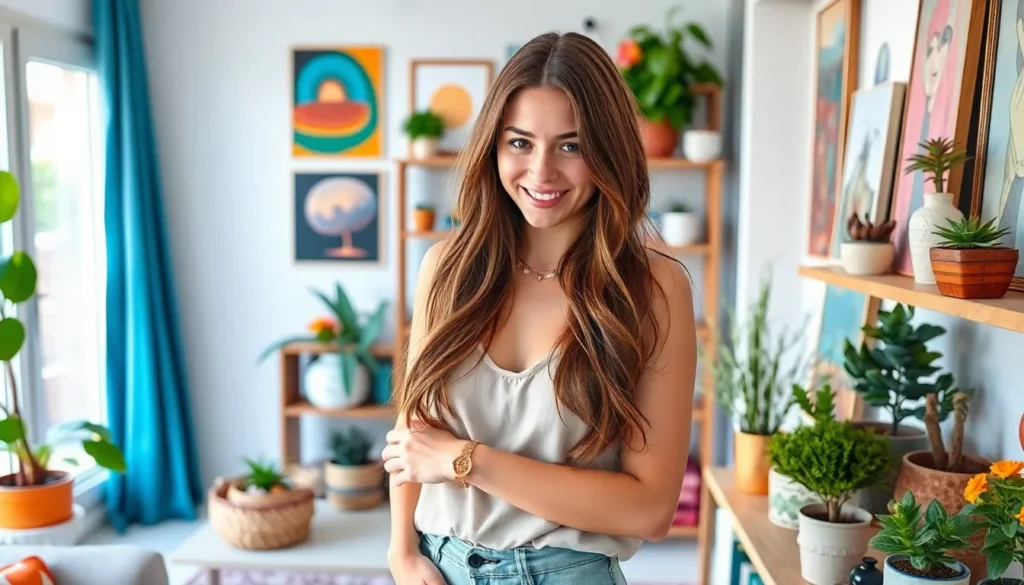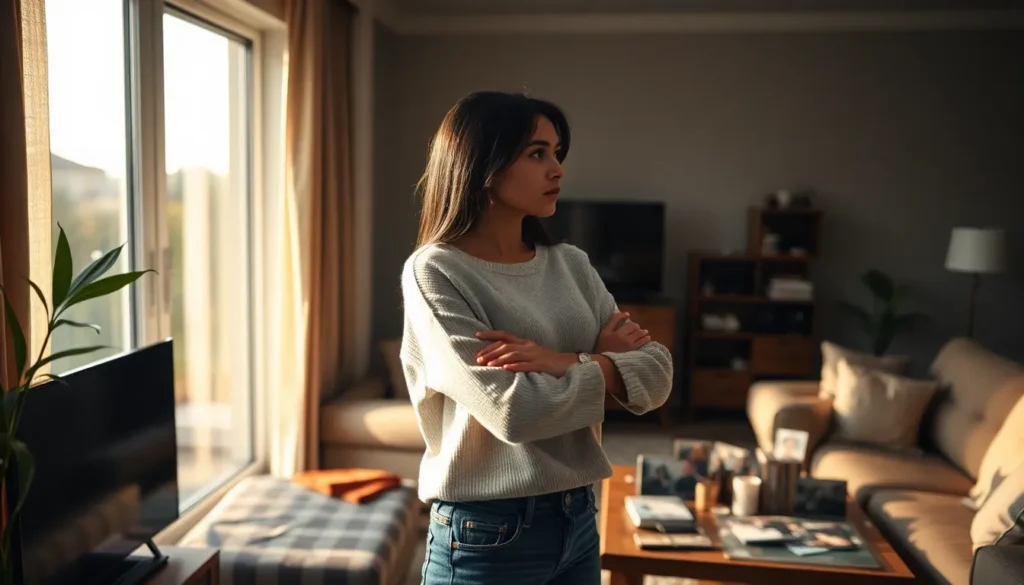Table of Contents
ToggleIn a world overflowing with visual stimuli, having an aesthetic vision isn’t just a luxury; it’s practically a survival skill. Imagine walking into a room and instantly knowing how to transform it from drab to fab with just a few strategic touches. That’s the power of aesthetic vision. It’s like having a sixth sense for beauty and design, allowing one to curate spaces and experiences that not only please the eye but also speak to the soul.
But don’t worry; you don’t need to be a professional designer or an art critic to harness this skill. With a dash of creativity and a sprinkle of confidence, anyone can develop their unique aesthetic vision. So whether you’re looking to revamp your living space or simply want to impress your friends with your keen eye for style, diving into the world of aesthetics is the first step to becoming the trendsetter you were always meant to be.
Understanding Aesthetic Vision
Aesthetic vision represents the ability to recognize, appreciate, and create beauty in various forms. This skill not only revolves around visual arts but also extends to everyday life, influencing personal style and environmental settings.
Definition of Aesthetic Vision
Aesthetic vision entails an individual’s capacity to perceive and interpret beauty through unique perspectives. It encompasses traits such as creativity, intuition, and the ability to connect disparate elements harmoniously. Individuals with strong aesthetic vision often draw inspiration from art, nature, and culture, allowing them to cultivate an individualized sense of style and atmosphere that resonates with their values and preferences.
Importance in Art and Design
Aesthetic vision plays a crucial role in both art and design, as it shapes how audiences engage with visual elements. It influences decisions regarding color, form, and composition, ensuring that artworks and designs convey intended emotions effectively. Effective aesthetic vision leads to high-quality work that attracts attention and evokes strong reactions. Additionally, it fosters innovation within artistic disciplines, pushing creators to experiment and redefine visual norms. The integration of aesthetic vision ultimately enhances the overall experience for viewers, making it essential for any artist or designer.
Elements of Aesthetic Vision

Understanding the elements of aesthetic vision enhances one’s ability to create and recognize beauty. Key components include color theory, composition techniques, and the emotional impact of visual elements.
Color Theory
Color theory involves understanding how colors interact and influence perception. Primary colors, red, blue, and yellow, blend to create secondary colors, such as green, orange, and purple. The color wheel illustrates relationships between colors, highlighting complementary and analogous schemes. Warm colors like red and orange evoke energy, while cool colors like blue and green convey calmness. Effective use of color creates mood and guides attention, making it essential in design and art.
Composition Techniques
Composition techniques focus on arranging elements within a space. The rule of thirds divides an image into a three-by-three grid, placing key elements along these lines for balance. Leading lines naturally draw the viewer’s eye through the artwork. Symmetry and asymmetry create visual stability and dynamic tension, respectively. Experimenting with these techniques enhances visual appeal, guides viewers, and strengthens the overall message.
Emotional Impact
Emotional impact refers to the feelings and responses evoked by visual elements. Art and design resonate with audiences through color choices, composition, and subject matter. Specific colors can trigger physiological responses, affecting mood and perception. For instance, soft pastels can induce tranquility, while bold contrasts may spark excitement. Crafting visuals with intentional emotional resonance enhances communication, enabling deeper connections between the creators and their audience.
Aesthetic Vision in Different Mediums
Aesthetic vision manifests uniquely across various mediums, revealing distinct expressions of beauty. Each art form has its own methods and influences.
Visual Arts
Visual arts encompass painting, sculpture, and mixed media. Artists engage their audience through deliberate choices in color, form, and technique. Color theory plays a pivotal role, as artists manipulate hues to evoke emotions. For instance, a vibrant palette might energize a piece, while muted tones create introspection. Composition techniques, like balance and symmetry, guide viewers’ eyes and shape their experience, enriching overall engagement. Ultimately, skilled artists harness these elements to connect deeply with audiences.
Photography
Photography captures moments and emotions through lens techniques and editing. Photographers leverage lighting, perspective, and framing to evoke specific feelings in their audience. For example, a high-contrast image might inspire tension, whereas soft lighting can create tranquility. Through the lens, they communicate narratives and highlight details often overlooked. Mastery of these techniques enhances storytelling. Ultimately, aesthetic vision in photography transforms everyday scenes into powerful visual statements.
Architecture
Architecture reflects aesthetic vision through design and spatial experience. Architects blend functionality with beauty, considering light, materials, and environment. Thoughtful architectural choices shape how occupants interact with spaces. An open floor plan can invite collaboration, while intimate nooks foster privacy. Designers also emphasize sustainability, ensuring harmony with nature. The impact of architectural aesthetics resonates beyond form, enriching human experiences and creating profound connections to surroundings.
The Role of Aesthetic Vision in Everyday Life
Aesthetic vision shapes everyday experiences and interactions with the world. This skill enhances personal style and transforms environments, enriching daily life.
Influence on Personal Style
Aesthetic vision significantly impacts personal style, influencing choices in clothing, accessories, and overall presentation. Individuals expressing their unique sense of beauty often attract attention and admiration. Mastering color combinations can evoke different emotions, while fabric textures and patterns enhance visual appeal. People keen on aesthetics often curate wardrobes that reflect their personality, balancing trends with personal tastes. Confidence in style choices not only boosts self-esteem but also encourages others to embrace their individuality. A clear understanding of aesthetic principles allows one to coordinate outfits that resonate with their vision, making a lasting impression.
Impact on Environmental Design
Environmental design benefits greatly from aesthetic vision, as it intertwines beauty and functionality. Thoughtful design decisions create spaces that evoke specific feelings and foster well-being. Color selection plays a crucial role in establishing ambiance, influencing mood and behavior within a space. Layouts and spatial arrangements can enhance movement and interaction among occupants. Aesthetic choices in materials and furnishings also significantly shape the overall vibe of an environment. People interacting with aesthetically pleasing spaces often experience increased comfort and satisfaction. Environments reflecting clear aesthetic intentions promote harmony, usability, and a genuine connection to the surroundings.
Aesthetic vision is more than just an artistic skill; it’s a way to enrich everyday life. By embracing this ability, individuals can transform their surroundings and express their unique identities. Whether in art, design, or personal style, cultivating an aesthetic sense opens doors to deeper connections and enhanced experiences.
As people explore their aesthetic vision, they not only elevate their own environments but also inspire others. This journey fosters creativity and innovation, making it an essential pursuit in today’s visually oriented world. Ultimately, developing an aesthetic vision empowers individuals to become trendsetters and create beauty that resonates with themselves and those around them.




